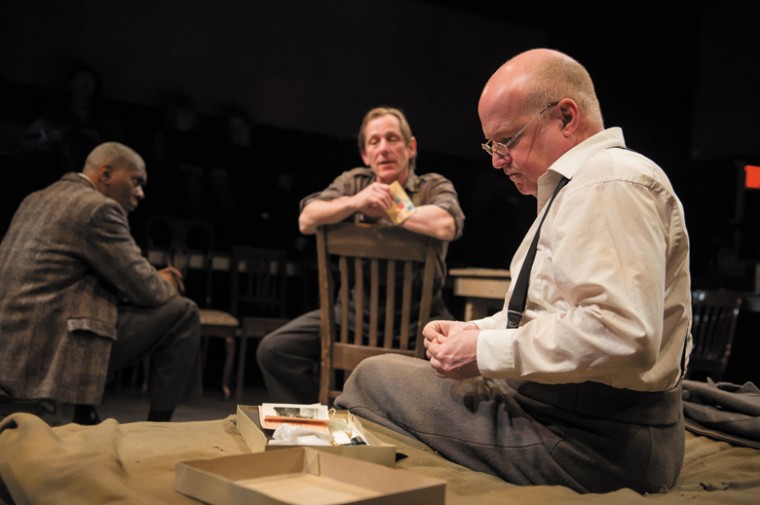Knowing the enemy within
Published April 18, 2012
What would you do if you were imprisoned with a Nazi war criminal, someone who you tried to assassinate during the war?
Kazimierz Moczarski found himself in this exact position. As an officer in the Polish resistance, Moczarski avoided capture during the Nazi occupation, but he was not so lucky with the Stalinist secret police in post-war Poland. He was accused of being a collaborator and tortured both mentally and physically.
ADVERTISEMENT
In 1949, Moczarski shared a prison cell with Jürgen Stroop, the field commander of the German troops who crushed the Warsaw Ghetto Uprising in 1943. Moczarski used his nine months as Stroop’s cellmate to study the workings of the war criminal’s mind.
Moczarski’s account of this period, “Conversations with an Executioner,” has just been adapted for the stage by Philip Boehm, the Artistic Director of Upstream Theater. The result is a compelling production, now showing at the Kranzberg Arts Center under Boehm’s direction.
When Moczarski is led into a cell occupied by Stroop and another SS officer, the Germans are friendly. Stroop even offers to give up the cell’s one cot, which he has been sleeping on because he outranks the other officer. In Stroop’s mind, Moczarski now deserves the cot because a native Pole outranks the foreigners. Moczarski refuses to accept Stroop’s hierarchy, and the first battle of wills ends in a standoff. Everyone sleeps on the floor.
All three characters are portrayed vividly from the first moment we meet them. J.Samuel Davis radiates the fierce power of mind that enabled Moczarski to endure years of imprisonment and torture and to memorize the conversations documented in his memoirs. After an episode of torture, Moczarski has to accept Stroop’s assistance. Even so, Davis never lets us forget that Moczarski is looking for ways to allow Stroop to reveal himself.
Stroop’s monstrousness is not immediately apparent in Boehm’s script or in Gary Wayne Barker’s incisive portrayal. Barker puts a human face on Stroop. His preoccupation with a girl he can see from his window, for example, makes him seem ordinary. His habit of polishing his boots seems unremarkable, too, until Moczarski’s probing gets Stroop to reveal exactly how the boots fit into his warped scheme of values.
ADVERTISEMENT
Another telling moment occurs when Stroop discovers contraband in the cell. He is obsessed with following rules even if they are his captors’ rules. When Stroop tells how the Warsaw Ghetto was subdued, Barker’s performance lays bare the repulsiveness within Stroop.
The third man in the cell, Gustaw Schilke, knows his place at the start of the play, but in John Bratkowski’s insightful performance, Schilke becomes more assertive under Moczarski’s influence. Robert A. Mitchell appears briefly as a guard and choreographed the fighting. Isaac Lifits provides live music on the accordion.
The bleakness of the prison is reflected in Scott C. Neale’s set design, Michele Siler’s costumes, Steve Carmichael’s lighting and Robert van Dillen’s props. The staging in the round encloses the cell in two rows of seats very close to the actors, emphasizing the constraints of captivity.
Gerry Kowarsky is cohost of HEC-TV’s “Two on the Aisle,” a biweekly look at St. Louis theater on cable and on the web at hectv.org.















